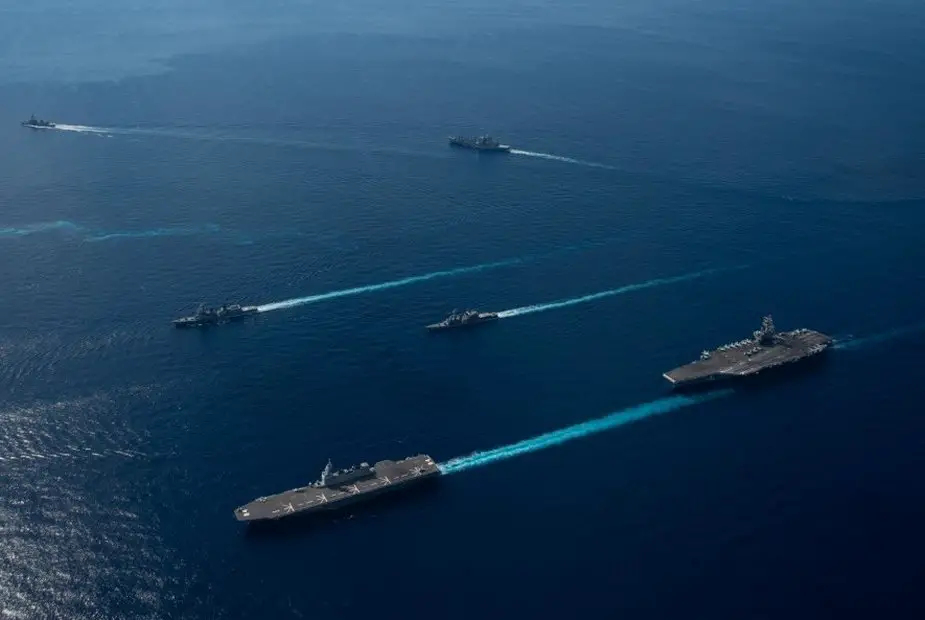Breaking news
U.S. Indo-Pacific Command forces and Japan Self-Defense Force kick off Keen Sword 21.
U.S. Indo-Pacific Command forces and units from the Japan Self-Defense Force began exercise Keen Sword 21 (KS21), Oct. 26, on military installations throughout mainland Japan, Okinawa prefecture, and their surrounding territorial waters.
Follow Navy Recognition on Google News at this link

U.S. Navy ships assigned to Ronald Reagan Carrier Strike Group joined ships of Japan Maritime Self-Defense Force (JMSDF) Escort Flotilla 1, Escort Flotilla 4, and the Royal Canadian Navy, in formation during Keen Sword 21 (Picture source: U.S. Navy/Mass Communication Specialist Seaman Askia Collins)
Keen Sword 21 is a biennial, Chairman of the Joint Chiefs of Staff-directed, U.S. Indo-Pacific Command-scheduled, and U.S. Pacific Fleet-sponsored field training exercise (FTX). The joint/bilateral FTX runs through Nov. 5.
KS21 is designed to enhance Japan-U.S. combat readiness and interoperability while strengthening bilateral relationships and demonstrating U.S. resolve to support the security interests of allies and partners in the region. “As we develop new and better ways to operate and integrate, exercises like this clearly demonstrate the growing strength of the U.S.-Japan Alliance,” said Lt. Gen. Kevin Schneider, commander, U.S. Forces Japan. “In spite of the immense global impact from COVID, the U.S.-Japan Alliance did not falter and we have remained ready to fight and win.”
An estimated 9,000 personnel from the U.S. Navy, Air Force, Army, and Marine Corps will participate, including ships from the Ronald Reagan Carrier Strike Group and more than 100 aircraft from Carrier Air Wing (CVW) 5, USS Ashland (LSD 48), HMCS Winnipeg (FFH 338), Commander Task Force 72 and 5th Air Force.
Units from the U.S. military and their JSDF counterparts will train in a comprehensive scenario designed to exercise the critical capabilities required to support the defense of Japan and respond to a crisis or contingency in the Indo-Pacific region.
U.S. training will focus on maritime, ground, and air events. Because of the bilateral nature of this exercise, JSDF training will be similar and will exercise a wide range of warfighting capabilities and demonstrate the inherent flexibility and capability of the U.S. and Japanese militaries.


























